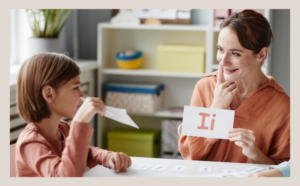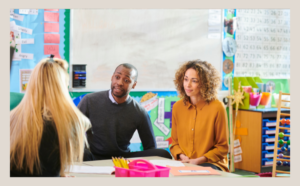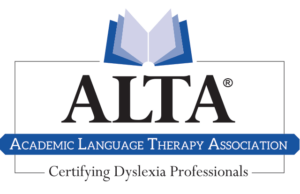No products in the cart.

By Amy Soukup, M.A. Special Education
Director of Education at Strategies for Learning
As in-person school closures have been announced in many parts of the country, teachers and parents are faced with navigating how to design an effective distance learning program.
While distance learning is difficult for many students, some types of virtual learning are more effective than others. Here are the different categories, and how they might show up in your child’s distance learning plan:
Passive Learning
Passive learning is a mode of instruction where learners receive instruction from teachers or other sources without direct feedback.
Examples of passive virtual learning:
- watching recorded videos on a topic
- listening to audio books
- Zoom lesson with minimal participation from students
The pros:
- easy way to provide access to instruction to many students
- often can be completed on a flexible schedule
The cons:
- the least effective type of learning for many students, research shows
- requires students to self-regulate, self-motivate, and absorb and apply new information with little to no teacher feedback
- often requires high levels of support from adults in the home
Active Learning
Active learning involves student participation and incorporates teacher feedback.
Examples of virtual active learning:
- Zoom lesson where students provide responses in real time (e.g. spelling practice with individual whiteboards to write words and hold up to the camera)
- an ongoing class discussion through Google Classroom
- using teacher comments to revise a writing assignment
The pros:
- allows teachers to generally monitor student activity and progress
- encourages active student participation
- could include small group break-out sessions and virtual check-ins with a teacher
The cons:
- teacher time and individualized attention often remains limited in many schools’ distance learning plans, even with the most innovative and available of teachers
- students (and their families) still hold more responsibility for regulation, motivation, and completing work
Interactive Learning
Interactive learning typically includes a real-time lesson where students are actively engaged throughout with continuous teacher feedback. This type of learning is the gold standard for many students, especially those with a neurodiverse profile.
Examples of virtual interactive learning include:
- multi-sensory activities, using an interactive online platform and/or physical materials
- real-time lessons with direct teacher feedback (e.g. scaffolding and support while solving a multi-step word problem in math)
- hands-on games and activities
The pros:
- tailored to individual student needs
- ongoing progress monitoring used to inform instruction
- use of student demeanor and body language to adjust pacing and planned breaks
- high level of support in regulation, motivation, and independence
The cons:
- Most schools are not in the position to provide significant, regular one-on-one or small group time with an educator.
How does Strategies for Learning fit in?
Strategies for Learning is poised to provide a highly specialized level of interactive virtual learning to support your child’s homeschool or distance learning plan.
Our sessions include:
- evidence-based practices and movement breaks
- high level of student engagement
- multi-sensory and hands-on learning
- real-time feedback and direct instruction
- support in social-emotional, executive function, and metacognition skills
Learn more about our virtual homeschool support plans or contact us to schedule an initial call.







No comment yet, add your voice below!